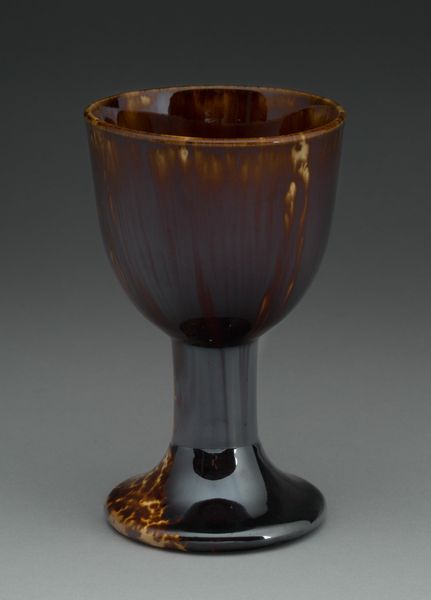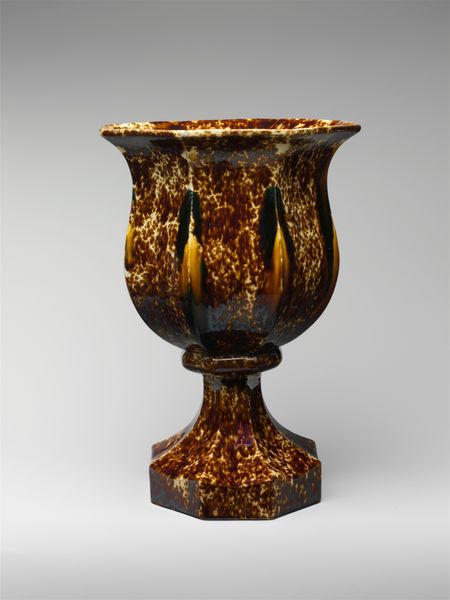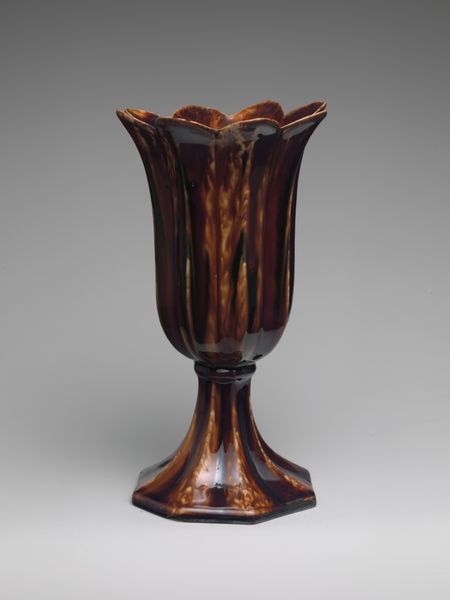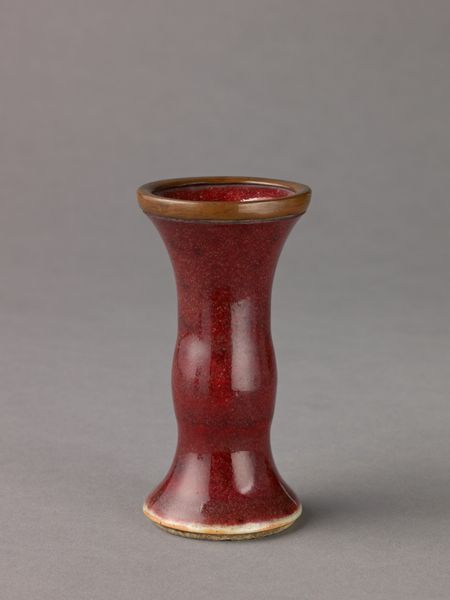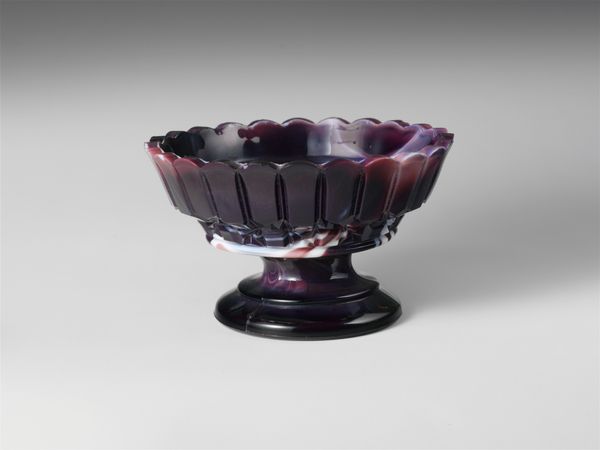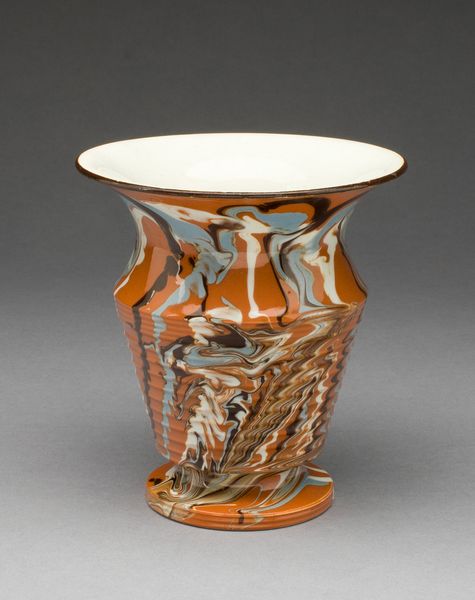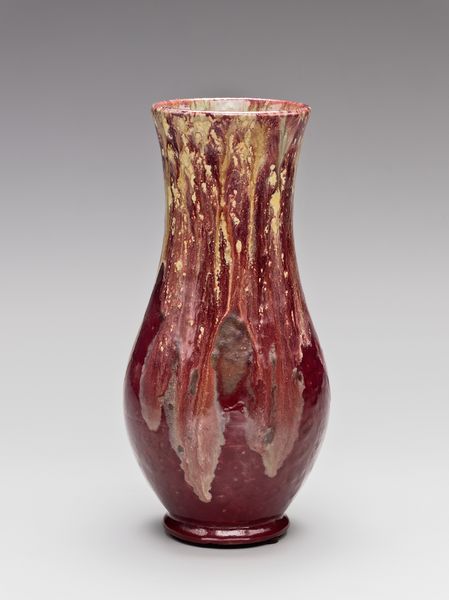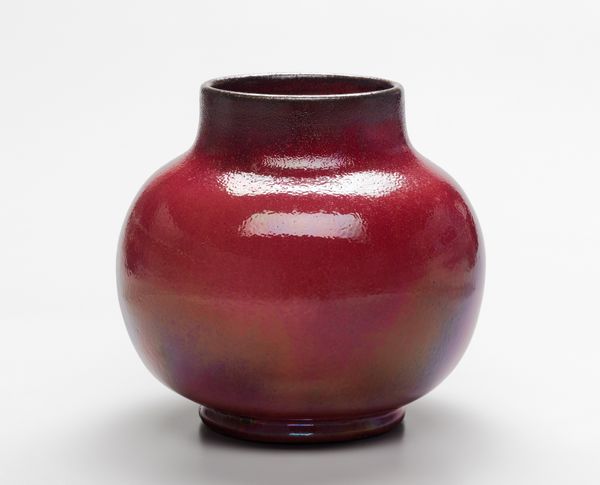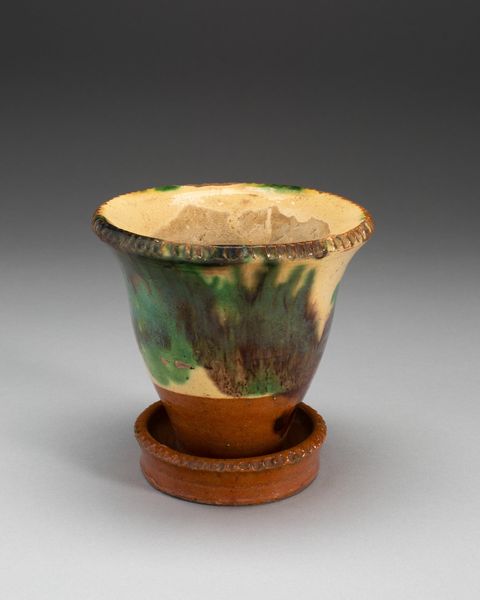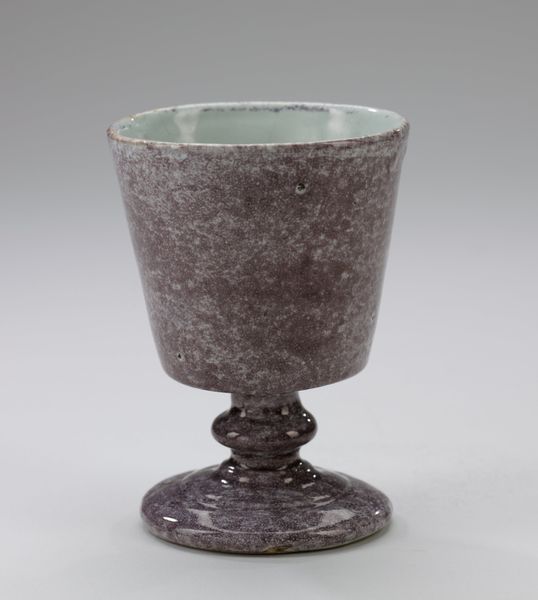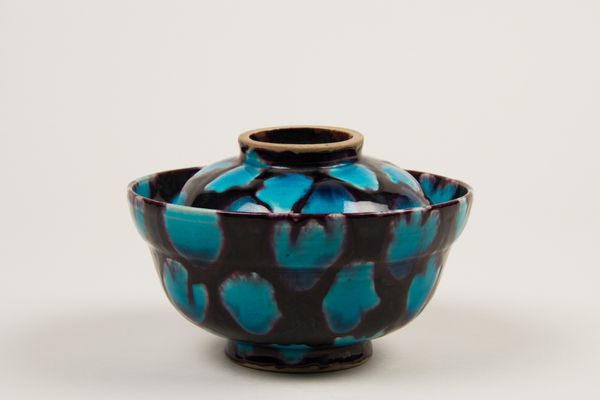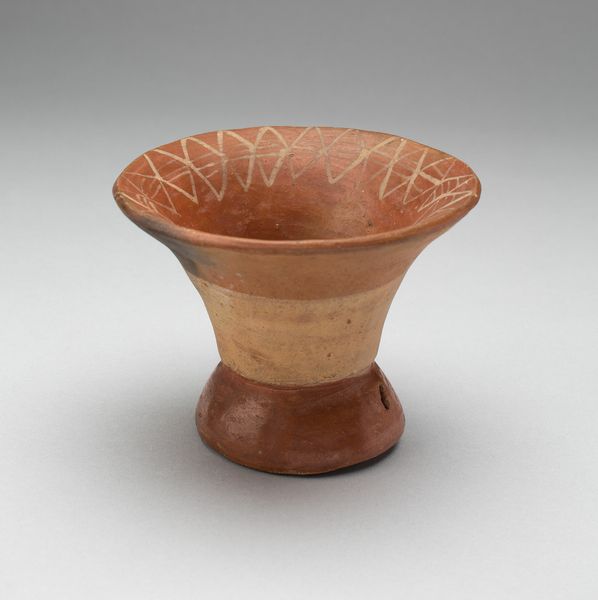
glass
#
glass
#
decorative-art
Dimensions: H. 11.1 cm (4 3/8 in.)
Copyright: Public Domain
Curator: What an extraordinary piece. We’re looking at a Lithyalin Beaker, crafted around 1830 by Friedrich Egermann. It resides here at the Art Institute of Chicago. Editor: It's mesmerizing. I'm immediately drawn to the rich, swirling patterns. The red and brown tones evoke feelings of warmth and earthiness, like a polished piece of jasper, or maybe even a petrified wood. And the rim is almost gilded. Curator: The "lithyalin" glass is fascinating, isn't it? Egermann patented the process, aiming to imitate semi-precious stones. The bourgeoisie's desire for luxury goods propelled a creative marketplace, and in places like Bohemia, artists began to pursue this desire to develop the skills of mimicking expensive and rare goods. Editor: Right, this marbled effect is really interesting in relation to social power and shifting identities. Imitation as an act, what do we learn from a culture that sought to fabricate value this way? The swirling effect of red, brown, and bits of blue does give off the impression of antiquity or primordial creation, a cultural memory written through layers of rock, clay, and pigment. I also think about global power, where these marbled lithyalin pieces circulate in global collections of antiquity, so there is a sense that Europe tried to possess a claim on geologic and evolutionary time. Curator: It's a fascinating lens through which to view this piece, this question of value creation. Looking closer, the form of the beaker itself is striking: the almost industrial fluting combined with organic patterns...a dialogue between man-made and natural forces. Editor: The interplay between natural imagery and that controlled, geometric fluting adds another layer. Glass itself carries a great deal of symbolic weight; it is fragile yet enduring, a carrier of light and reflection, both a container and a portal. Curator: Precisely! And thinking about the historical context of glassmaking, the symbolism goes deeper. It reflects advancements in chemistry, in industry, the desire to harness nature. All while maintaining this allusion to organic materials. It is such a potent statement from the early 19th century! Editor: I concur entirely. And the craftsmanship elevates the object. The maker invites the owner, or even the viewer, to consider the changing ideas that this object embodied during a critical moment. It is amazing that such dialogue can happen through an everyday object like this beaker. Curator: It's truly a testament to Egermann's ingenuity, as well as the moment it was made. The Lithyalin Beaker invites conversations about desire, artifice, and our ongoing relationship with the natural world. Editor: Absolutely. Seeing how visual echoes and innovative techniques come together really lets us reflect on what it meant to craft beauty in a rapidly changing world.
Comments
No comments
Be the first to comment and join the conversation on the ultimate creative platform.
